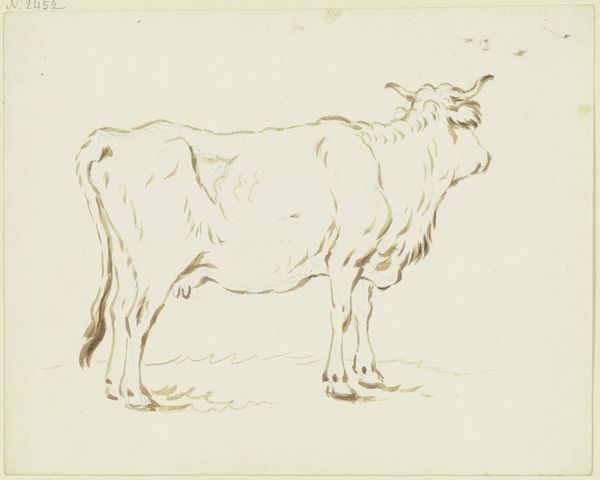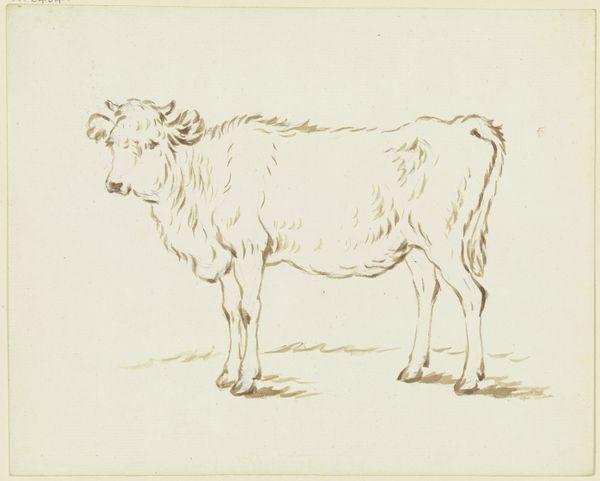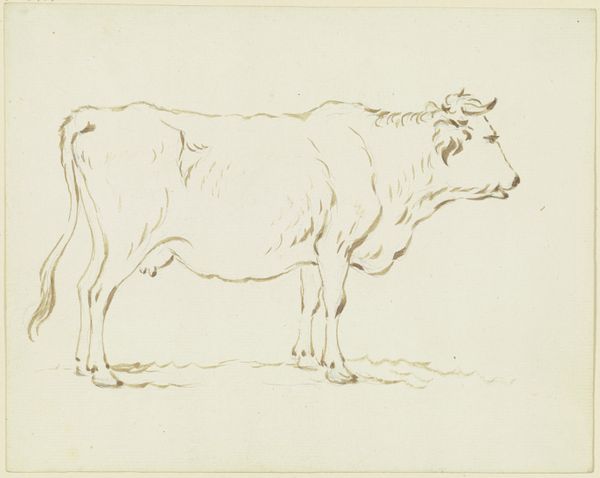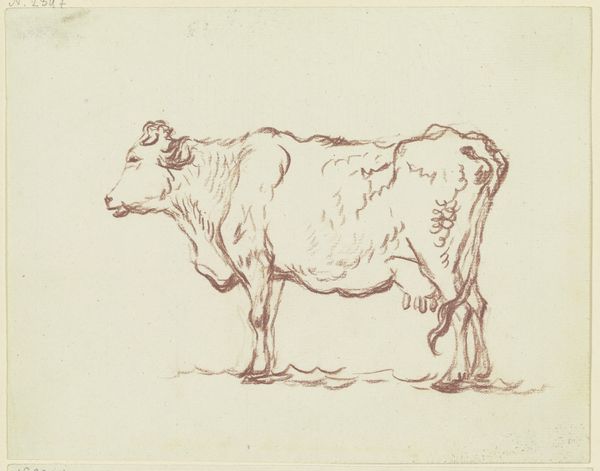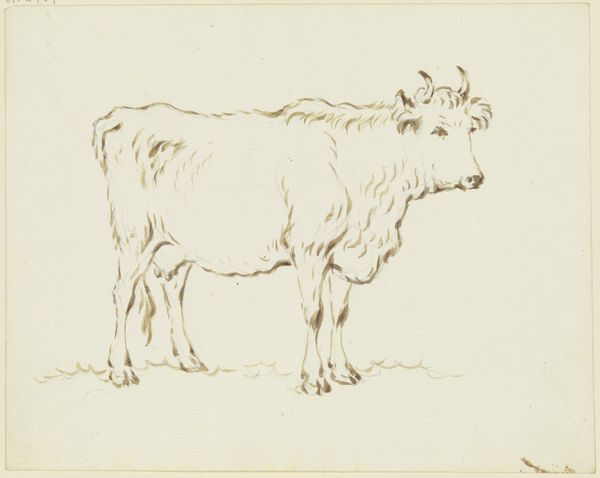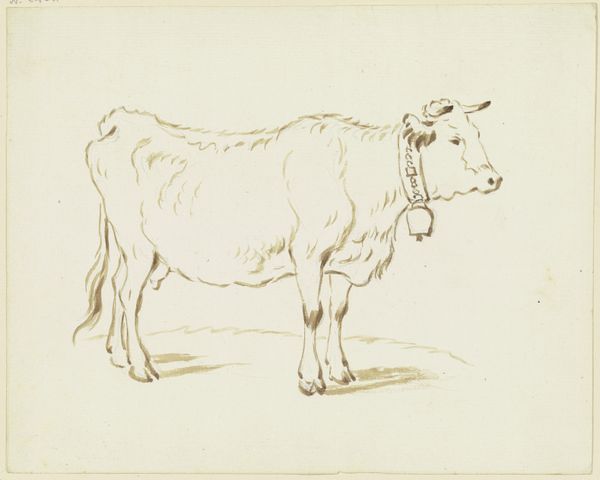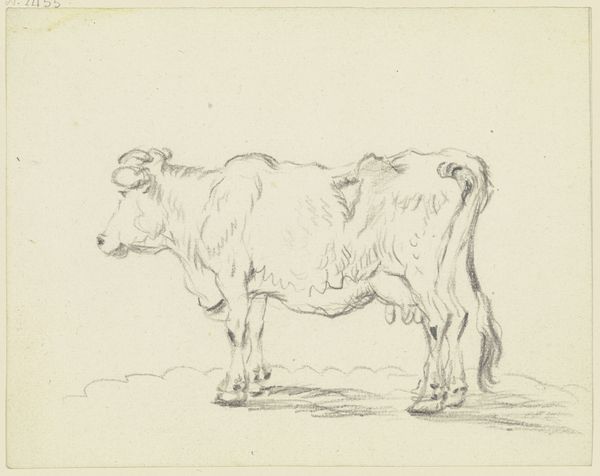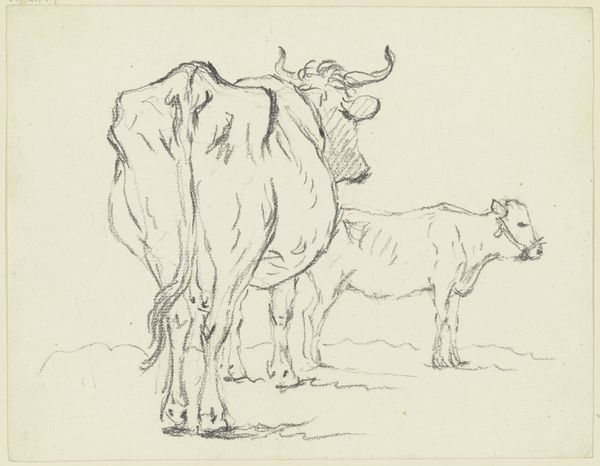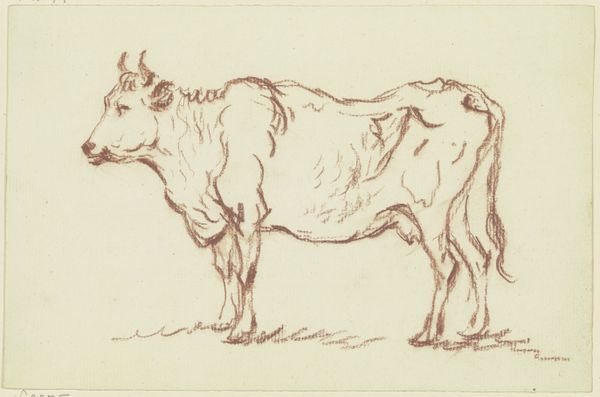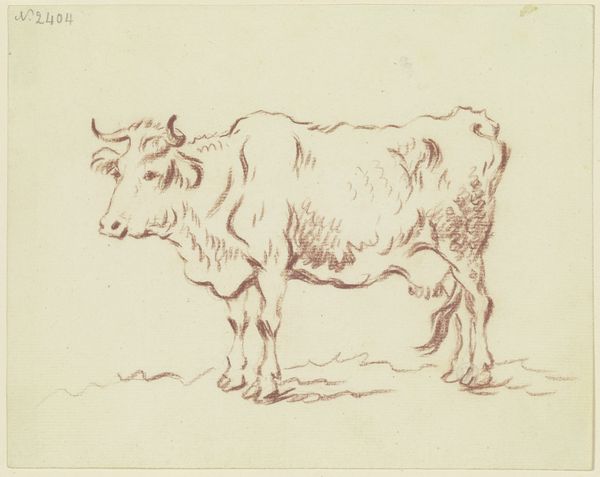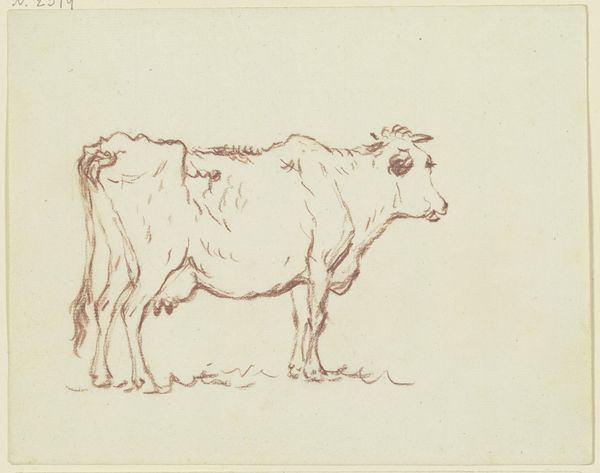
drawing, ink, graphite
#
drawing
#
landscape
#
etching
#
ink
#
graphite
#
realism
Copyright: Public Domain
Curator: Here we have a drawing by Friedrich Wilhelm Hirt, titled "Stehende Kuh nach rechts, den Kopf abgewandt" or "Standing Cow Facing Right, Head Turned Away." It is held here at the Städel Museum. Editor: My initial reaction is one of calm simplicity. It’s a very ordinary scene, rendered in gentle sepia tones of ink and graphite. There's an immediate sense of rustic life and closeness to nature, the image seems quite genuine. Curator: I agree; it speaks to a time of agricultural and pastoral imagery becoming more prominent. This work allows us insight into the world from Hirt’s point of view, especially how rural themes entered the visual vocabulary and were becoming significant within artistic spaces. We have art depicting the common aspects of rural life appearing more within museums and gallery walls. Editor: Absolutely. The choice of depicting such a commonplace animal says so much. Consider how farm animals become symbolic markers, of both wealth, labor, but also more gentle images of providing and nurturing; The turning away of its head somehow adds a layer of interiority to an otherwise stoic, animal subject. Curator: Yes, that turned head – it’s a rejection of the viewer, perhaps? A reminder of the animal’s independence from human observation. Perhaps this speaks to a desire of retaining something of the natural world, unspoiled from modernity or agricultural advances which would ultimately encroach further onto natural environments. Editor: I see it as less confrontational. It may be about domestic harmony as much as it may about preserving something. It is about the natural order and relationship of farm animals with us, in an attempt to return and value the essential aspects of life, reflecting nostalgia to preserve what may soon be fading as a new industrialized landscape takes over. Curator: Interesting perspective! So, as much as it memorializes, it prepares society to accept, and indeed embrace these transitions? It suggests acceptance through familiar forms? Editor: Precisely. And on this level it speaks volumes, both of the culture in that time, as well as it remains something deeply relevant as contemporary art reflects themes like preservation and loss today. Curator: Thank you for allowing me to view Hirt’s Cow through this cultural, sociological lens. I find the emotional texture layered in realism and the domestic both fascinating and highly thought-provoking. Editor: Indeed. I’m grateful to recognize how an intimate portrayal can carry such weight beyond its obvious subject.
Comments
No comments
Be the first to comment and join the conversation on the ultimate creative platform.
